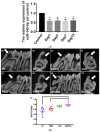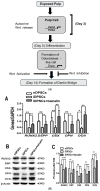Advances in Regenerative Dentistry: A Systematic Review of Harnessing Wnt/β-Catenin in Dentin-Pulp Regeneration
- PMID: 38995004
- PMCID: PMC11240772
- DOI: 10.3390/cells13131153
Advances in Regenerative Dentistry: A Systematic Review of Harnessing Wnt/β-Catenin in Dentin-Pulp Regeneration
Abstract
Dentin pulp has a complex function as a major unit in maintaining the vitality of teeth. In this sense, the Wnt/β-Catenin pathway has a vital part in tooth development, maintenance, repair, and regeneration by controlling physiological activities such as growth, differentiation, and migration. This pathway consists of a network of proteins, such as Wnt signaling molecules, which interact with receptors of targeted cells and play a role in development and adult tissue homeostasis. The Wnt signals are specific spatiotemporally, suggesting its intricate mechanism in development, regulation, repair, and regeneration by the formation of tertiary dentin. This review provides an overview of the recent advances in the Wnt/β-Catenin signaling pathway in dentin and pulp regeneration, how different proteins, molecules, and ligands influence this pathway, either upregulating or silencing it, and how it may be used in the future for clinical dentistry, in vital pulp therapy as an effective treatment for dental caries, as an alternative approach for root canal therapy, and to provide a path for therapeutic and regenerative dentistry.
Keywords: Wnt/β-catenin; dentin; pulp; regeneration; signaling pathway.
Conflict of interest statement
The authors declare no conflicts of interest.
Figures







Similar articles
-
The Hippo-YAP/β-catenin signaling axis coordinates odontogenic differentiation in dental pulp stem cells: Implications for dentin-pulp regeneration.PLoS One. 2025 Jun 26;20(6):e0326978. doi: 10.1371/journal.pone.0326978. eCollection 2025. PLoS One. 2025. PMID: 40570025 Free PMC article.
-
Cellular dynamics and signalling mechanisms in dentine repair: A narrative review.Int Endod J. 2025 Sep;58(9):1354-1383. doi: 10.1111/iej.14261. Epub 2025 Jun 9. Int Endod J. 2025. PMID: 40491185 Review.
-
Notum as a Crucial Regulator of Matrix Integrity in Dentinogenesis.J Cell Physiol. 2025 Jul;240(7):e70070. doi: 10.1002/jcp.70070. J Cell Physiol. 2025. PMID: 40685976 Free PMC article.
-
Operative caries management in adults and children.Cochrane Database Syst Rev. 2013 Mar 28;(3):CD003808. doi: 10.1002/14651858.CD003808.pub3. Cochrane Database Syst Rev. 2013. Update in: Cochrane Database Syst Rev. 2019 Jul 24;7:CD003808. doi: 10.1002/14651858.CD003808.pub4. PMID: 23543523 Updated.
-
Regenerative Dentistry: Applications of Bioactive Materials in Dentin-Pulp Complex.Adv Exp Med Biol. 2025 Aug 21. doi: 10.1007/5584_2025_876. Online ahead of print. Adv Exp Med Biol. 2025. PMID: 40833670
Cited by
-
Histone acetylation facilitates multidirectional pulp repair through Neuregulin-1 mobilization.Stem Cells Transl Med. 2025 Jun 25;14(7):szaf022. doi: 10.1093/stcltm/szaf022. Stem Cells Transl Med. 2025. PMID: 40580029 Free PMC article.
-
Revolutionary Regeneration Therapy Utilizing Dental Stem Cells and State-of-the-Art Nanotechnology Devices to Heal Injured Teeth and Tissues.Avicenna J Med Biotechnol. 2025 Apr-Jun;17(2):83-97. doi: 10.18502/ajmb.v17i2.18559. Avicenna J Med Biotechnol. 2025. PMID: 40453915 Free PMC article. Review.
References
Publication types
MeSH terms
Substances
LinkOut - more resources
Full Text Sources

